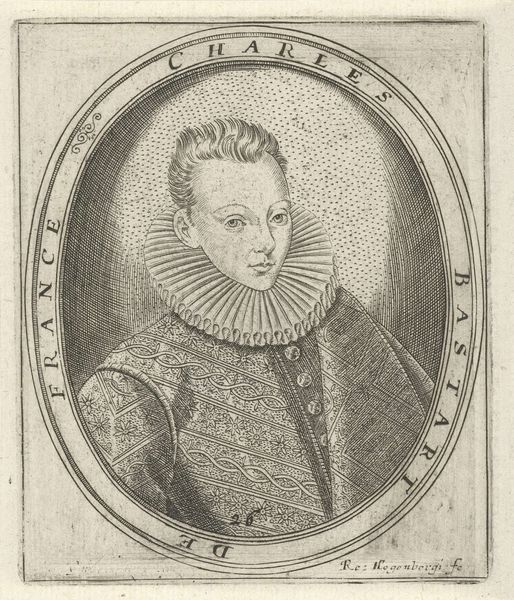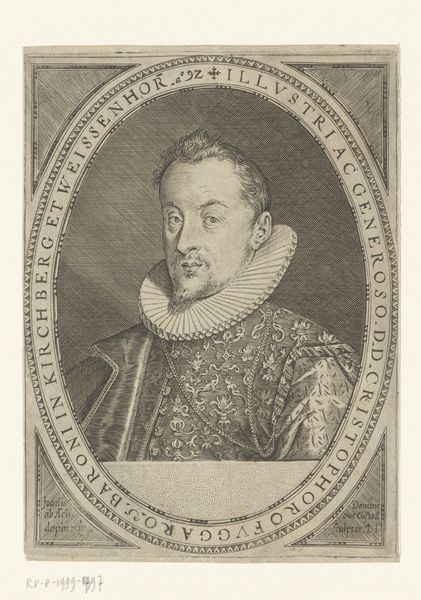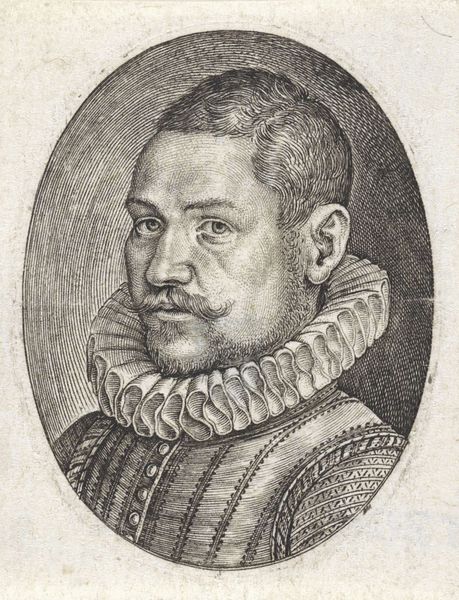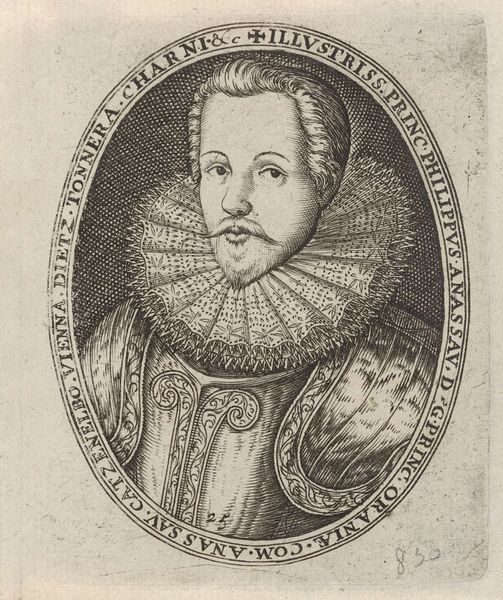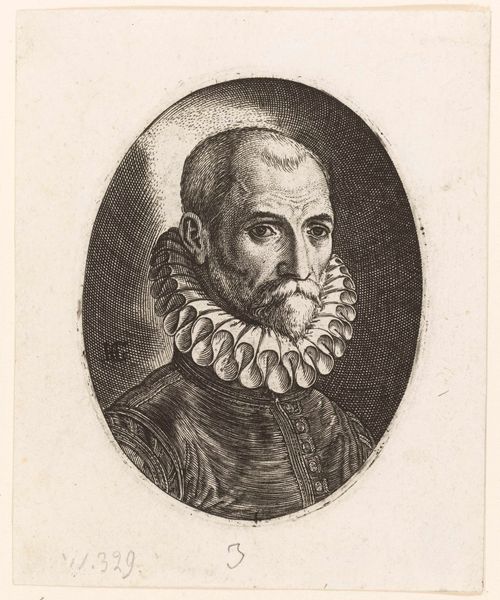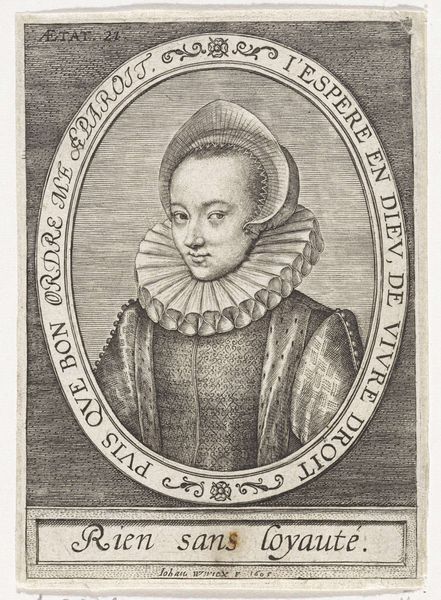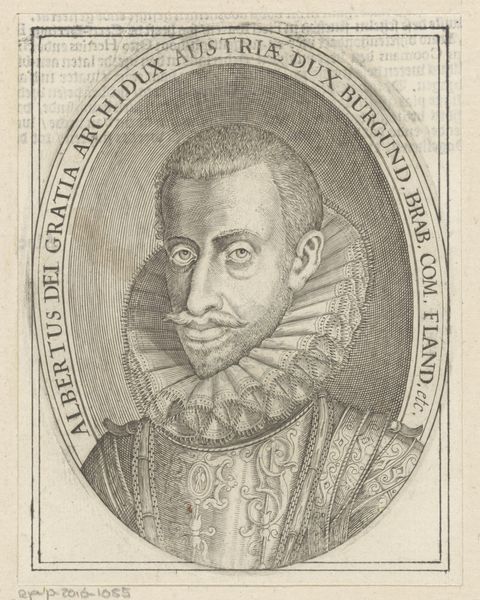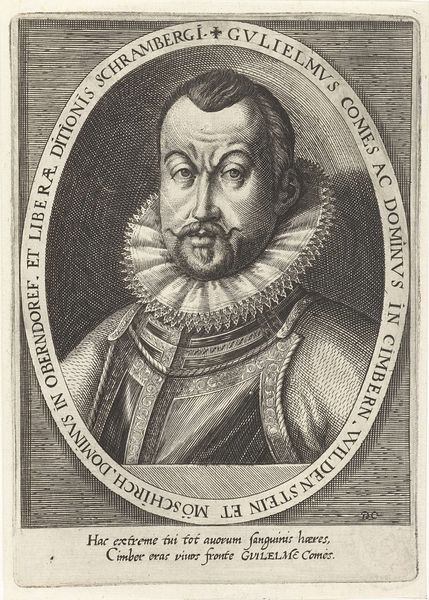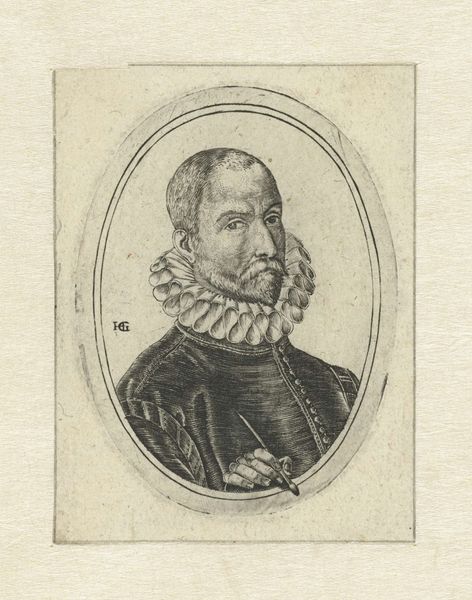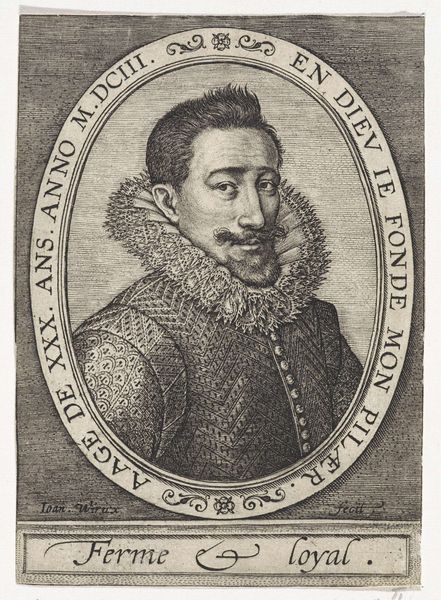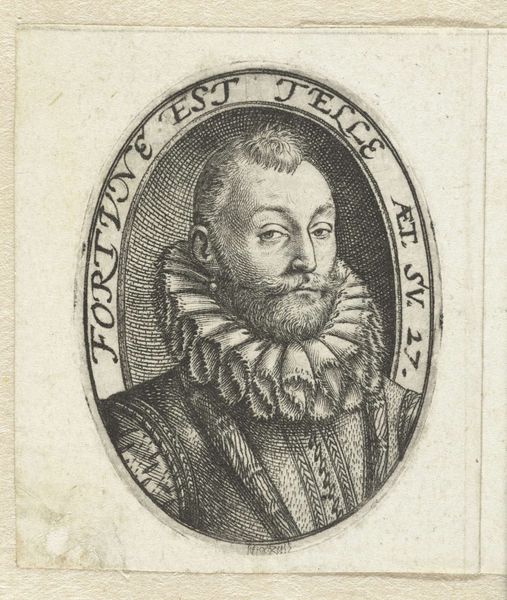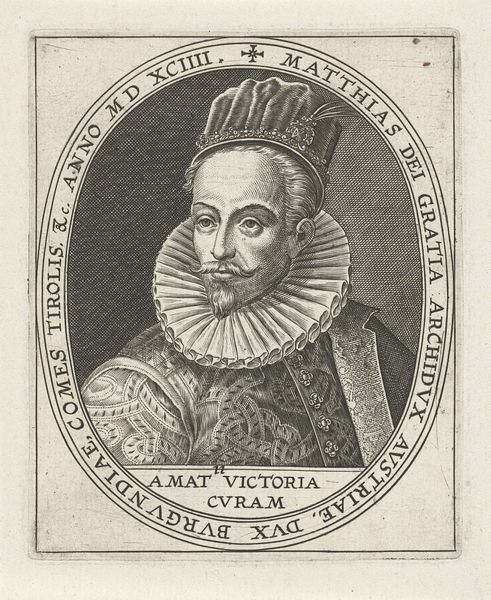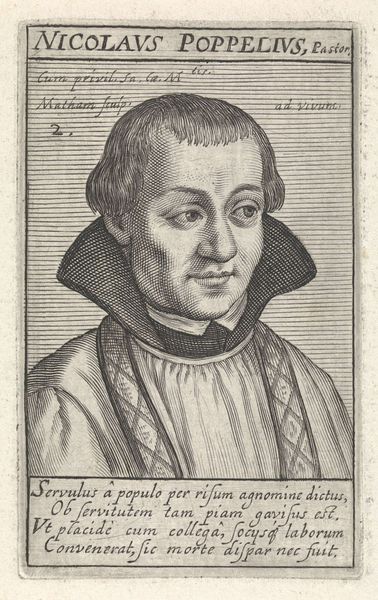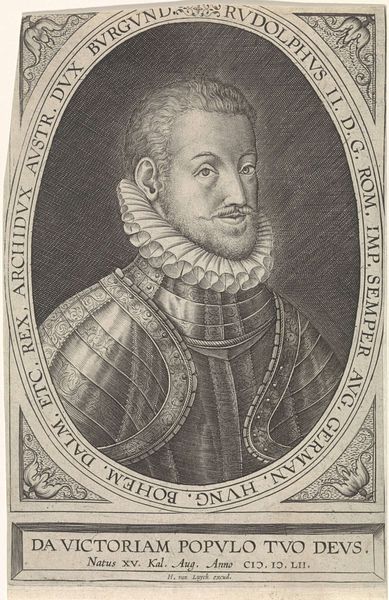
drawing, print, paper, ink, pencil, engraving
#
portrait
#
drawing
#
medieval
# print
#
pencil sketch
#
mannerism
#
paper
#
ink
#
pencil drawing
#
pencil
#
13_16th-century
#
engraving
Dimensions: height 73 mm, width 59 mm
Copyright: Rijks Museum: Open Domain
Curator: I find this “Portret van een onbekende man,” an engraving from 1612 by Wierix, utterly captivating. The meticulous detail, especially given the medium, draws me in immediately. Editor: Yes, there’s an undeniable air of melancholic composure, isn’t there? The way the eyes are rendered suggests a weight of unspoken thoughts, while the elaborate ruff collar, though fashionable, somehow feels restrictive. It lends the work a formal almost stifling effect. Curator: Precisely. The very act of commissioning such a portrait spoke volumes about one’s social standing during that era. It was about preserving an image, solidifying one's place within the societal hierarchy. Although unknown, the sitter would have had importance and enough wealth to justify the production of this print. Editor: Notice also how the artist has paid particular attention to the man's attire. That complex pattern is a web-like motif and this coupled with the heavy use of circular forms is drawing me to the cyclical ideas surrounding status at this time. Wealth attained but maintained through constant visual reaffirmation. Curator: I think that it may speak to the emerging role of printmaking during the period. Wierix and others could circulate imagery widely; images weren’t just confined to the wealthy patron who commissioned a painting but could also disseminate into popular culture through print. Editor: I see your point about circulation shaping the meaning. So the images had significance to this specific man as a subject. But the reproduction gave the art cultural meaning through the sheer power of repetition and ubiquity. Curator: And the symbolism wouldn't have been lost. He probably understood how this engraving would play within his social sphere, but could also be circulated. He could shape how society sees him by using the language of the age to portray status and the authority that goes with it. Editor: What intrigues me most, still, is that despite all these displays of visual power and cultural capital. It lacks individuality as if he understood himself primarily through his social positioning rather than through himself. Almost a warning really of the dangers of placing such emphasis on fleeting trends and markers. Curator: That is an astute way of summarizing. Looking at this work now, I'm left pondering the enduring relationship between portraiture, identity, and social standing, and wondering how those things still echo today in our own visual landscape. Editor: Absolutely. Art endures and morphs, taking different lessons, as does visual language itself, generation after generation.
Comments
No comments
Be the first to comment and join the conversation on the ultimate creative platform.
